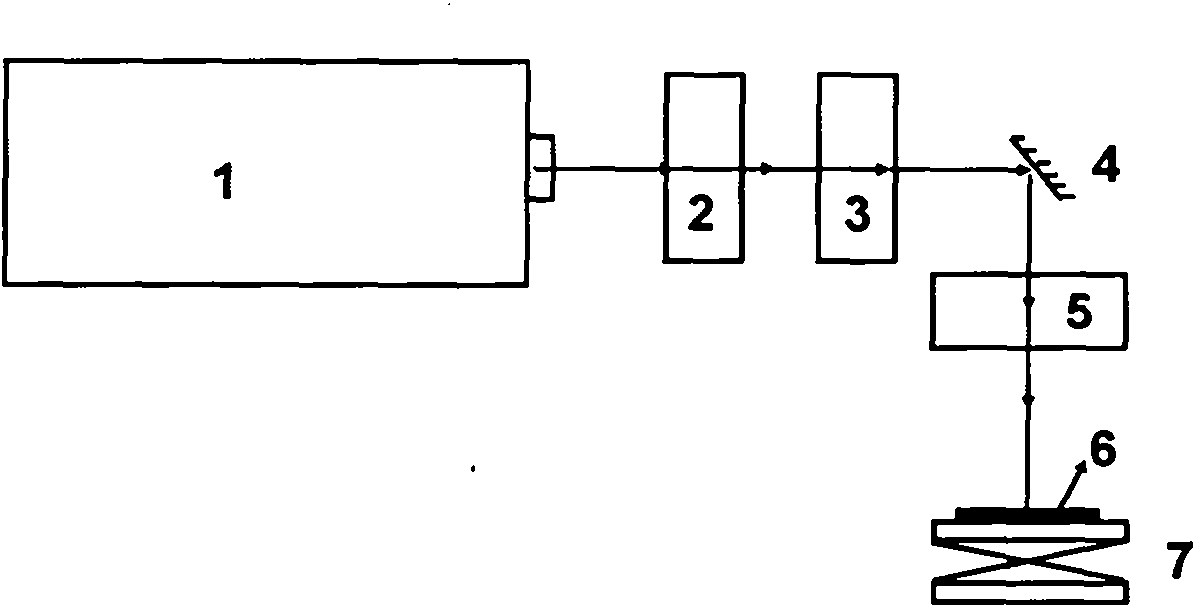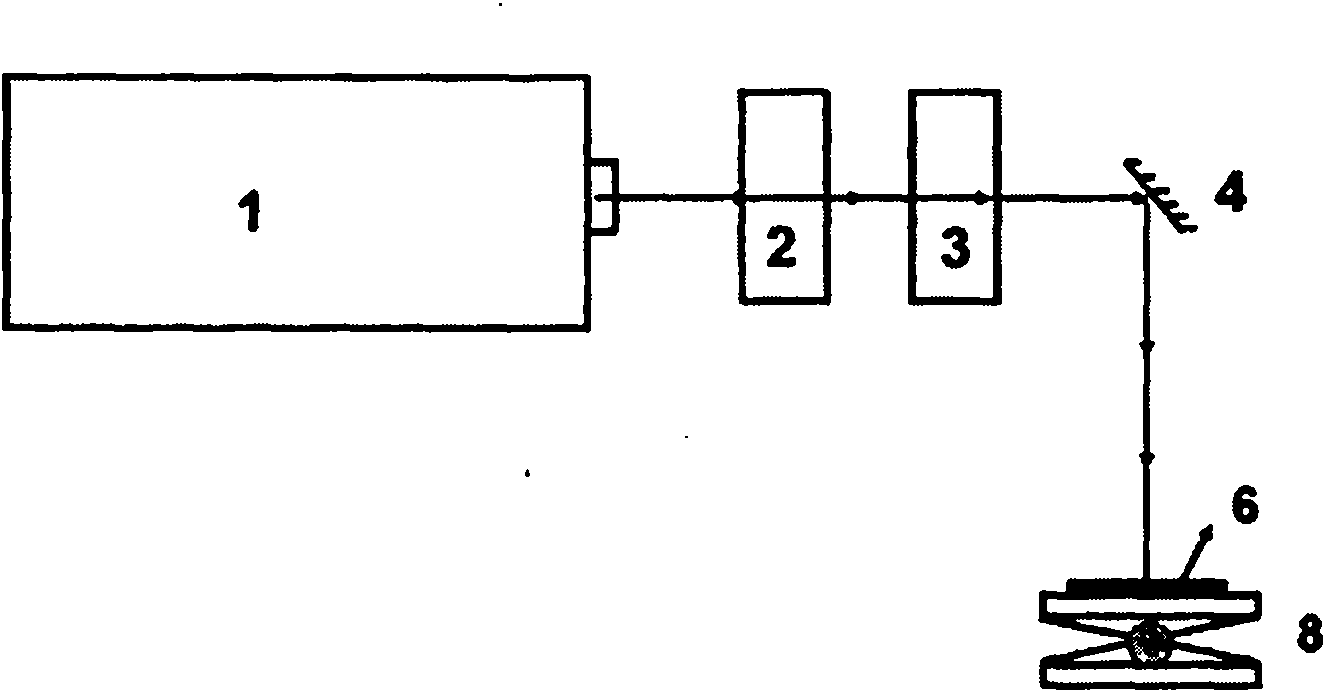LED large-area controllable surface coarsening and etching method based on laser
A surface roughening and laser technology, used in semiconductor devices, electrical components, circuits, etc., can solve the problems of high purchase and use costs of etching equipment, reduced electrical performance of LEDs, and difficulty in accurately controlling the rate and depth of corrosion. Low cost of equipment and use, improved current injection efficiency, and improved light extraction efficiency
- Summary
- Abstract
- Description
- Claims
- Application Information
AI Technical Summary
Problems solved by technology
Method used
Image
Examples
Embodiment 1
[0037] Taking a 2-inch GaN-based front-mounted LED epitaxial wafer as an example to illustrate the implementation method of the present invention:
[0038] (1) The structure of GaN-based front-mounted LED epitaxial wafer from bottom to top is sapphire, silicon carbide or silicon substrate, buffer layer GaN, intrinsic GaN layer, n-GaN confinement layer, multiple quantum well active light-emitting region, p - GaN confinement layer.
[0039] (2) Roughening is performed on the p-GaN confinement layer, and the thickness of the p-GaN confinement layer is about 200 nm.
[0040] (3) Turn on the UV 355nm laser to make its laser output in a standby state.
[0041] (4) Adjust the laser beam shaping module to obtain the beam energy distribution required for processing.
[0042] (5) Fix the GaN-based front-mounted LED epitaxial wafer at the center of the elevating sample stage, adjust the elevating sample stage so that the ultraviolet 355nm laser beam is located in the center of the epit...
Embodiment 2
[0049] Taking a 2-inch GaN-based vertical process LED epitaxial wafer as an example to illustrate the implementation method of the present invention, the 4th, 5th, 9th, and 10th steps are the same as those in Example 1, and the differences are:
[0050] (1) The structure of the GaN-based vertical process LED epitaxial wafer from bottom to top is silicon substrate, p-GaN confinement layer, multiple quantum well active light-emitting region, n-GaN confinement layer, and intrinsic GaN.
[0051] (2) Roughening is performed on the intrinsic GaN layer, and the thickness of the intrinsic GaN layer is about 1.5 μm.
[0052] (3) Turn on the UV 355nm laser to make its laser output in a standby state.
[0053] (6) Import the required roughing processing pattern into the high-precision electric stage control software, such as a vertical, horizontal and vertical stripe structure with a period of 15 microns, a processing duty ratio of 50%, and a processing area of covering all 2-inch Ga...
Embodiment 3
[0057] Taking a 2-inch GaAs red LED epitaxial wafer as an example to illustrate the implementation method of the present invention, the 4th, 5th, 9th, and 10th steps are the same as those in Example 1, and the differences are:
[0058] (1) The structure of GaAs red LED epitaxial wafer from bottom to top is GaAs substrate, n-GaAs confinement layer, multiple quantum well active light-emitting region, p-GaAs confinement layer, and GaP window layer.
[0059] (2) Roughening is performed on the GaP window layer, and the thickness of the GaP window layer is about 8 microns.
[0060] (3) Turn on the 532nm laser so that its laser output is in a standby state.
[0061] (6) Import the required roughing processing pattern into the high-speed galvanometer control software, such as the concentric ring structure with an inner and outer layer interval of 20 microns, the processing duty cycle is 50%, and the processing area is to cover all 2 inches of GaAs red Light LED epitaxial wafer.
[0...
PUM
| Property | Measurement | Unit |
|---|---|---|
| Thickness | aaaaa | aaaaa |
Abstract
Description
Claims
Application Information
 Login to View More
Login to View More - R&D
- Intellectual Property
- Life Sciences
- Materials
- Tech Scout
- Unparalleled Data Quality
- Higher Quality Content
- 60% Fewer Hallucinations
Browse by: Latest US Patents, China's latest patents, Technical Efficacy Thesaurus, Application Domain, Technology Topic, Popular Technical Reports.
© 2025 PatSnap. All rights reserved.Legal|Privacy policy|Modern Slavery Act Transparency Statement|Sitemap|About US| Contact US: help@patsnap.com



